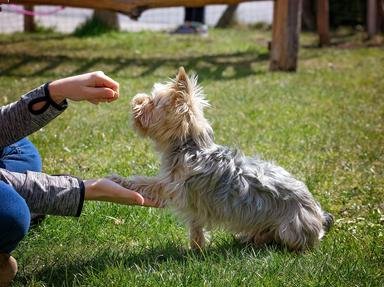Quiz Answer Key and Fun Facts
1. How are the three heights of dogs, under British Kennel Club rules, described?
2. What obstacles have to be left out of a British Kennel Club jumping course?
3. In 2003 the British Kennel Club relinquished its monopoly over British agility, allowing BKC members to attend non BKC competitions. Which club bravely took on the might of the BKC to bring this about?
4. Which of these events would result in the dog being eliminated from a run?
5. One of the independent agility authorities is UKAgility. This is based more on American agility rules and is very well structured. Who created UKA?
6. What does it mean in a 'Time Fault and Out' competition when the judge blows the whistle?
7. If a class is marked as a 'Special Class' at a British Kennel Club competition what does this mean?
8. How is the course time set at British Kennel Club competitions?
9. What is the British Kennel Club rule concerning titbits in the competition ring?
10. A steeplechase course for dogs is made up only of jumps and what other obstacles?
Source: Author
helenwalland
This quiz was reviewed by FunTrivia editor
crisw before going online.
Any errors found in FunTrivia content are routinely corrected through our feedback system.
